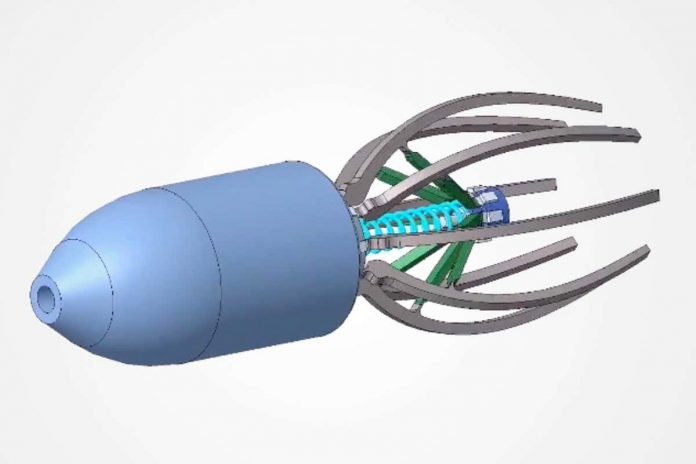[ad_1]
Robot squid that move to a rhythm can match the power efficiency of the real animals, a trick that could be useful for designing next-generation submarines.
Real squid have small fins that they use for careful manoeuvring, but when a big burst of speed is required they suck in and expel water to propel themselves. Researchers have tried to build robots that mimic this jet-like behaviour, but now a team led by Gabriel Weymouth at the University of Southampton, UK, has discovered a way to boost their efficiency.
Weymouth and his colleagues created an umbrella-like robot with eight 3D-printed plastic ribs covered by a rubber skirt. It flexes outwards to suck in water and contracts to expel it, providing thrust.
The researchers experimented with operating the robot at a range of different opening and closing frequencies, comparing its energy input and output to measure its efficiency.
Advertisement
They found that firing pulses of water at the natural resonance of the machine – the frequency at which the robot naturally tends to operate – saw it achieve an efficiency 100 times greater than at higher or lower speeds, matching the most efficient squid found in nature. “It’s enormously better. There’s definitely a sweet spot,” says Weymouth.

Bujard et al., Sci. Robot. 6, eabd2971 (2021)
By operating at this sweet spot the robot can take advantage of its elastic body to snap closed and help power its next thrust, similar to how pushing someone on a swing at just the right moment makes them swing slightly higher each time. Previous research has shown that many animals adopt a similar strategy of using natural resonances to boost their movement.
Weymouth hopes the design could be adapted to power future submarines more efficiently and with less risk to wildlife because the apparatus will be soft, unlike propellers. “There isn’t really a use case for propellers any more,” he says.
The team now plans to upgrade the robot with additional water thrusters to provide manoeuvrability, as the current version can only move in a straight line.
Journal reference: Science Robotics, DOI: 10.1126/scirobotics.abd2971
Sign up for Wild Wild Life, a free monthly newsletter celebrating the diversity and science of animals, plants and Earth’s other weird and wonderful inhabitants
More on these topics:
[ad_2]
Source link











